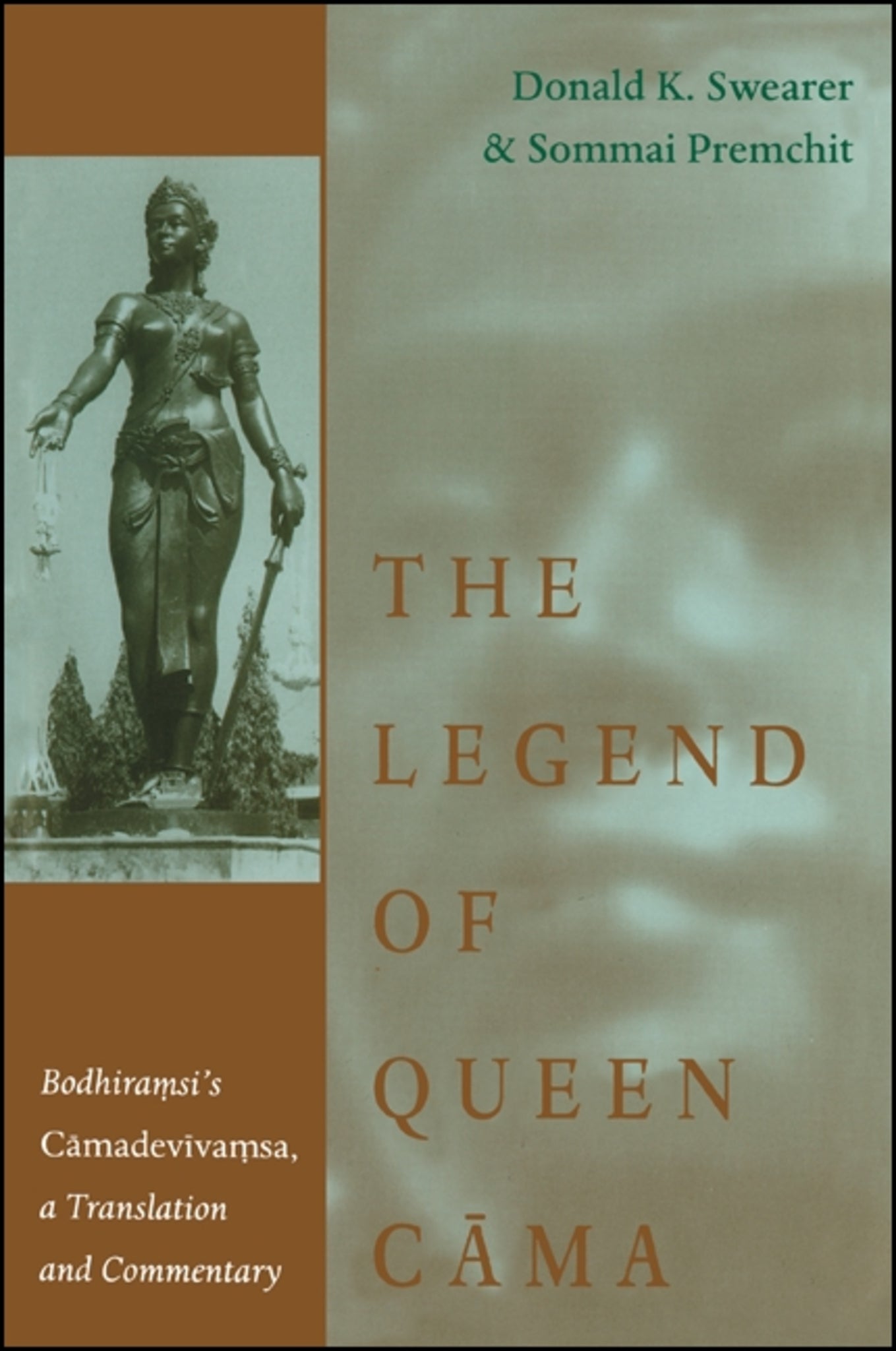We're sorry. An error has occurred
Please cancel or retry.
The Legend of Queen Cāma

Some error occured while loading the Quick View. Please close the Quick View and try reloading the page.
Couldn't load pickup availability
- Format:
-
04 June 1998

An English translation and a commentary on the chronicle of Queen Cama, an important but neglected female monarch who founded a dynasty in Northern Thailand.
The Legend of Queen Cāma ( Cāmadevīvaṃsa), an early fifteenth-century Pali chronicle written by Mahathera Bodhiraṃsi, recounts the story of the founding of the kingdom of Haripuñjaya in the Chiang Mai valley of Northern Thailand in the seventh century C.E. Similar to other Theravāda Pali chronicles, the legend integrates religious and political stories, namely, Queen Cāma's founding of a dynastic lineage and the fortunes of Buddhism within it. The Legend of Queen Cāma offers revealing insights into the nature of Buddhism as a living tradition during one of the greatest periods in the history of Thai Buddhism. These insights include the symbolic structure of Buddhist cosmology, the close association of Buddhism and the founding of city states, the interrelationship of popular Buddhist ethical teachings and devotional religion, and the inherently syncretic nature of Buddhism as presented in a text indebted to the folkloric traditions of Northern Thailand.
One of the most striking features of the book is the parallelism between the text's dominant narratives—the Buddha's journey to Northern Thailand and his prediction of the discovery of a Buddha relic by King Adittaraja (eleventh century C.E.), and the founding by Queen Cāma of a lineage destined to govern Haripunjaya for five hundred years. The Buddha and Queen Cāma are equal partners in this creative, cosmically significant act. Both plant the seeds that mature into a Mon Buddhist politico-cultural center that predates the advent of Thai suzerainty in Northern Thailand by five hundred years.


"The translation itself provides easy access to an engaging narrative. More important, though, is the skillful placement of the translated text within several overlapping contexts: historical, context of religious practice, authorial intentions, literary structure." — Anne M. Blackburn, University of South Carolina, Columbia
LIST OF ILLUSTRATIONS
MAP
SPECIMEN PAGE
DRAMATIS PERSONAE
ACKNOWLEDGMENTS
ABBREVIATIONS
INTRODUCTION
PART I. INTERPRETATION
The Camadevivamsa and the Chronicle Tradition of Northern Thailand
The Structure of the Camadevivamsa
The Camadevivamsa as a Narrative Tapestry of Myth, Legend, and History
And History
Which Camadevi?
PART II. THE CAMADEVIVAMSA
1. The Buddha's Prophecy
2. Vasudeva and the Founding of Migasanghanagara
3. The Plan for Building Haripuñjaya
4. Camadevi Consecrated as Queen of Haripuñjaya
5.-6. Synopsis from the Jinakalamalipakaranam
7. Victory over Milakkharaja
8. The Coronation and Marriage of Mahantayasa
9. The Founding of Khelanga
10. Camadevi at Khelanga and the Founding of Alambanganagara
11. Camadevi's Reign at Alambanganagara, Her Return to Haripuñjaya, and Her Death
12. Royal Succession, Cholera Epidemic, and Flight to Hamsavati
13. Adittaraja's Reign and the Battle with Lavo
14. Victory over Lavo
15. King Adittaraja and the Appearance of the Buddha Relic
APPENDIX RULERS OF HARIPUÑJAYA
GLOSSARY OF SELECTED PALI TERMS
BIBLIOGRAPHY
INDEX



